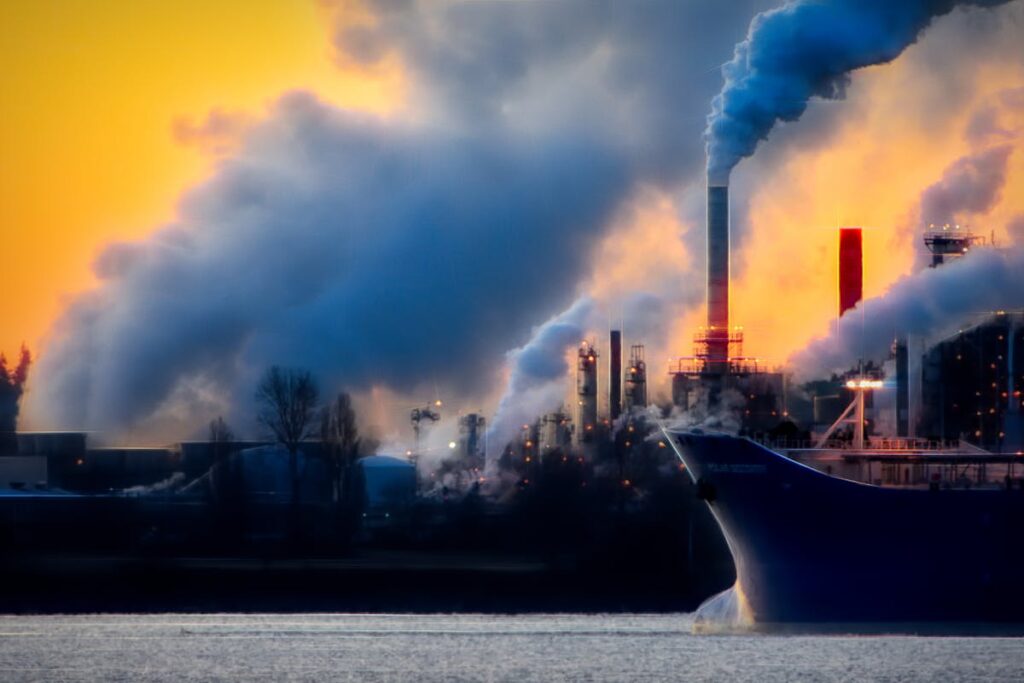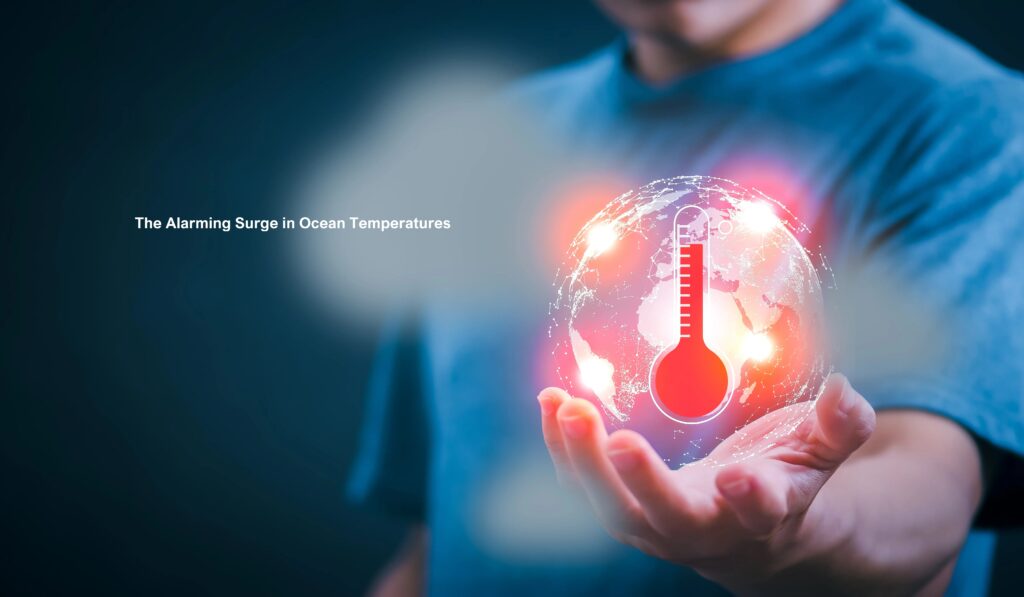The rapid warming of our oceans is no longer a distant concern—it’s an undeniable reality. Over the past few decades, the rate at which the ocean’s surface waters are heating up has quadrupled, signaling profound and systemic changes occurring on a global scale.
While much attention is often focused on land-based temperature shifts, the rising heat of the oceans carries far-reaching consequences. From intensifying storms to the collapse of fragile marine ecosystems, the effects of this warming extend far beyond the water’s edge. Recent years have made it clear: the ocean is heating up faster than ever before.
From Inaccurate Ship Data to Satellite Precision
For decades, our understanding of ocean temperatures relied heavily on ship-based data collection. However, this method was fraught with limitations. Ships primarily traveled along major shipping routes, leaving vast areas of the ocean poorly monitored.
Temperature readings were often inconsistent and geographically limited, leading to significant inaccuracies. Early studies of ocean surface temperatures were thus incomplete and not truly representative of global conditions.
The advent of satellite technology in the 1980s revolutionized our ability to monitor the oceans. Satellites now scan the globe, providing accurate and comprehensive data on ocean temperatures.
As the World Meteorological Organization explains, “With the Earth spinning beneath these low-altitude satellites, they cover a different strip of its surface in each orbit, eventually sampling the entire planet.”
This technological breakthrough allows scientists to gather consistent data from all corners of the globe, offering a clearer and more precise understanding of how the ocean’s surface is warming.
The Accelerating Rate of Ocean Surface Warming
Satellite data has revealed a troubling trend: ocean surface temperatures are rising at an unprecedented rate. Initially, the increase was relatively slow, but the last few decades have seen a dramatic acceleration. Between 1985 and 1989, the global mean sea surface temperature (GMSST) increased by only 0.06°C per decade.
However, from 2019 to 2023, this rate skyrocketed to 0.27°C per decade—a staggering increase that underscores the speed at which climate change is impacting our oceans.
Professor Christopher Merchant uses a vivid analogy to explain this phenomenon: “If the oceans were a bathtub of water, then in the 1980s, the hot tap was running slowly, warming the water by just a fraction of a degree each decade.
But now, the hot tap is running much faster, and the warming has picked up speed.” To slow this warming, we must “close off the hot tap” by cutting global carbon emissions and transitioning toward net-zero goals.
Human Activity and the Acceleration of Ocean Warming
Human activity has played a pivotal role in accelerating ocean surface warming. The rise in global temperatures is closely tied to increased carbon emissions, primarily from burning fossil fuels. This has disrupted the Earth’s natural energy balance.
Since the Industrial Revolution, greenhouse gas concentrations—such as carbon dioxide and methane—have surged, trapping heat within the Earth’s atmosphere and preventing it from escaping into space. This process, known as the greenhouse effect, has caused the planet’s energy imbalance to grow.
As more heat becomes trapped, the Earth’s climate systems respond in ways that exacerbate warming trends, particularly in the oceans. With oceans absorbing more heat, their surface temperatures rise, intensifying the effects of climate change.
Research by Professor Merchant and his team quantifies this imbalance, showing that for every gigajoule of accumulated energy per square meter, the GMSST increases by 0.54 ± 0.07 K. This directly links carbon emissions to rising ocean temperatures.
The Role of Natural Cycles in Ocean Temperature Variability

Natural cycles, such as the El Niño Southern Oscillation (ENSO), also play a significant role in ocean temperature variability. During an El Niño event, ocean surface temperatures warm considerably, particularly in the central and eastern Pacific, influencing weather patterns and contributing to short-term global temperature spikes. Conversely, La Niña events cool the ocean’s surface, leading to temporary dips in global temperatures.
While these cycles are integral to the Earth’s climate system, they often obscure long-term warming trends. For instance, during strong El Niño periods, the spike in ocean temperatures may give the impression that the rate of warming has slowed or plateaued. This makes it challenging to discern the underlying trend without considering long-term data.
The Connection Between Warmer Oceans and Extreme Weather
Rising ocean temperatures have dire consequences for extreme weather events. Warmer oceans fuel more intense hurricanes, tropical storms, and other severe phenomena.
The energy driving these storms originates from warm ocean water, which provides heat and moisture to the atmosphere. When surface waters are hotter than usual, storms become stronger, with higher wind speeds and longer durations.
In recent years, the intensity of storms, such as hurricanes in the Atlantic, has notably increased, aligning with the rapid warming of the oceans.
Coastal regions worldwide are bearing the brunt of these changes, with storm surges and flooding becoming more frequent and severe, threatening lives, infrastructure, and livelihoods.
Impacts on Marine Ecosystems

The warming of ocean waters is wreaking havoc on marine ecosystems, with coral reefs being particularly vulnerable. Often called the “rainforests of the sea,” coral reefs are crucial to aquatic biodiversity. When sea temperatures rise, coral polyps expel the algae living within their tissues, leading to coral bleaching.
This phenomenon diminishes the aesthetic value of reefs and disrupts entire ecosystems, as reefs provide shelter and food to countless marine species.
The International Fund for Animal Welfare notes, “One of the most widely known consequences of rising temperatures and marine heatwaves is the global phenomenon of coral bleaching.” The degradation of coral reefs has far-reaching consequences for ocean biodiversity, affecting everything from fish populations to coastal protection.
Economic and Social Consequences for Coastal Communities
Coastal communities are highly vulnerable to warming oceans, facing immediate and long-term economic impacts. Declining fish populations and shifting habitats leave fishermen without a steady income, while tourism-dependent regions suffer as coral reefs and beaches deteriorate. Increased coastal flooding and storm damage further disrupt local economies.
As the U.S. Environmental Protection Agency highlights, “Damage to the coasts, such as from hurricanes and flooding, has negative impacts on the economy.” These challenges threaten the livelihoods of millions who depend on the ocean for sustenance and economic stability.
Professor Christopher Merchant’s Findings
Professor Christopher Merchant and his team at the University of Reading have been instrumental in advancing our understanding of ocean warming. Their research reveals that 44% of the temperature difference between the peak of the 2023/2024 warming event and previous high-temperature periods, such as the 2015/2016 El Niño, cannot be explained by natural factors alone. This suggests that the rapid warming trend is driven by human activities rather than cyclical events.
The “Hot Tap” Analogy
Professor Merchant’s “hot tap” analogy effectively illustrates the acceleration in ocean warming. In the 1980s, the oceans warmed slowly, like a bathtub with a slow-running hot tap. Today, the tap is running much faster, causing temperatures to rise rapidly. This reflects an increased rate of energy absorption by the ocean, driven by rising greenhouse gas concentrations.
Reducing Carbon Emissions and Investing in Renewable Energy

To mitigate ocean warming, reducing carbon emissions is essential. Individuals can contribute by adopting energy-efficient practices, using public transport, and minimizing waste.
On a global scale, transitioning to renewable energy sources like solar, wind, and geothermal is vital. Governments must prioritize clean energy investments, while businesses and individuals should support these efforts to foster a sustainable future.
The Urgency of Action
The accelerated warming of ocean surfaces is not a distant threat—it’s happening now. Rising temperatures are linked to extreme weather events, devastated marine ecosystems, and severe social and economic risks, particularly for coastal communities.
Addressing both human-driven and natural factors is critical. Reducing carbon emissions, investing in renewable energy, and supporting marine conservation are essential steps. However, success requires collective global action. Governments, businesses, and individuals must unite to mitigate ocean warming and safeguard the health of our oceans for future generations.


